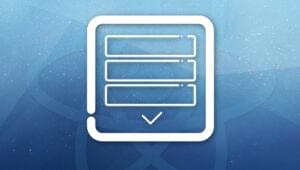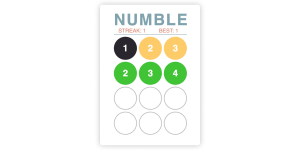Interactive JavaScript Charts Using Data from Google Sheets
Key Takeaways
- Interactive JavaScript charts can be created using data from Google Sheets, offering dynamic updating whenever changes are made to the spreadsheet data.
- The process involves exporting data from Google Sheets as JSON, fetching this data via Ajax, restructuring the data to match the required format, creating a chart with a tool such as FusionCharts, and customizing the chart to suit specific needs.
- FusionCharts accepts JSON data as an array of objects containing label and value keys, and the chart can be customized in terms of type, height, width, labels, and data source.
- While Google Sheets is a convenient and accessible data source, other sources can also be used for creating JavaScript charts, and the data can be updated in real-time with a polling mechanism.
This article was peer reviewed by Jeff Smith. Thanks to all of SitePoint’s peer reviewers for making SitePoint content the best it can be!
Meet my friend Jenny. She recently started coding websites. She loved her job and was very happy until she met Steve, who has a reputation of being, let’s say, not a very easygoing client.
Steve had a lot of data in a spreadsheet and he wanted to display that on his website. Our friend (now Jenny is your friend too!) suggested that Steve make the charts in Excel and upload them as images to the website.
But Steve being Steve, he wanted the charts to be interactive. Not only that, he also wanted the charts to get updated whenever he made a change to the data in his spreadsheet .
Jenny didn’t know how to tackle this issue, so she came to me. And, being the good friend I am, I gave her this advice:
First ask your client to move his data to Google Sheets (because that’s what all the cool people are doing nowadays). Then we can easily implement the features that he needs — interactive JavaScript charts and dynamic updating.
Her client agreed (luckily!), and Jenny and I coded rest of the solution. But how? Well, that’s what this tutorial will teach you.
I have divided this tutorial into five easy-to-follow steps:
- Exporting data from Google Sheets
- Fetching JSON from Google Sheets via Ajax
- Restructuring the data
- Creating a chart with FusionCharts.
- Customizing the chart
So without further ado, let’s dive in!
Exporting Google Sheets Data as JSON
Before delving into how to export data, let’s first create a sheet. Assuming you’ve got a Google account, you can do this by going to the Google Sheets page and hitting the Start a new spreadsheet button. In the spreadsheet that opens, create two columns: Actor and Income. Then fill your newly created sheet with some data. I’ve taken mine from here: The World’s Highest-Paid Actors 2015.
As you can see, the left column contains labels for our chart, the right one values corresponding to those labels. For those of you following along at home, you can grab a copy of this sheet here (go to File > Make a copy).
The data available in Google Sheets can be exported to multiple formats like JSON, XML etc. And once exported to any of those formats, it can be easily accessed via the web.
To open your document to the web, you need to make the following changes to the document settings:
- Set the sharing of the document to either Public on the web, or Anyone with the link. To achieve this, click the Share button in the top right-hand corner, then click the Advanced option that appears in the bottom right of the pop up.
- Publish the document to the web. This option is available under File > Publish to the web
With these two changes made, the data in the document can be accessed in JSON format via: https://spreadsheets.google.com/feeds/list/SPREADSHEET/od6/public/basic?alt=json
You will need to replace SPREADSHEET with the ID of your Google Sheet, which in our case is 1Aoz_GcPYoEIMMNd1N_meYNOp8TJ0fCXpp1AoUhCpwZo. You can see the results here.
Using jQuery to Fetch JSON from Google Sheets
We will use jQuery’s get() method to fetch the data from Google Sheets. You can include jQuery from a CDN as shown:
<script type="text/javascript" src="https://code.jquery.com/jquery-1.12.0.min.js"></script>
With the <script> tag added, call $.get on the the spreadsheet URL we have created.
var spreadsheetId = "1Aoz_GcPYoEIMMNd1N_meYNOp8TJ0fCXpp1AoUhCpwZo",
url = "https://spreadsheets.google.com/feeds/list/" +
spreadsheetId +
"/od6/public/basic?alt=json";
$.get({
url: url,
success: function(response) {
console.log(response);
}
});
The above jQuery code makes an Ajax request to the Google Sheets URL, and upon successfully fetching the data, it calls the success function. This function logs the data returned from the server to the console. I would encourage you to run this script and take a moment to examine exactly what is returned.
Restructuring the Data
The JSON data from Google Sheets needs to be restructured a little to match the data format accepted by our visualization library. For this tutorial we’ll be using FusionCharts.
FusionCharts accepts JSON data as an array of objects containing label and value keys. This is what it looks like:
[{
"label": "Robert Downey Jr.",
"value": "80"
}
...]
To achieve this, we need to run following piece of code in the success callback of the jQuery get function we defined earlier.
var data = response.feed.entry,
len = data.length,
i = 0,
parsedData = [];
for (i = 0; i < len; i++) {
parsedData.push({
label: data[i].title.$t,
value: data[i].content.$t.replace('Income: ', '')
});
}
What we are doing here is iterating over each Google Sheet data object present in response.feed.entry and extracting the label and value out of it. Then we are storing them in a new array parsedData, which will be used by the chart.
The label is available in the title.$t key and the value is available in content.$t key of the data object. The value though contains the sheet column name, which is not necessary, hence we strip it out. The rest of the data in the Google Sheet is not needed for the visualization.
The parsedData array now contains data in a format which will be understood by FusionCharts and we can continue on with creating the visualization.
Step-3: Creating the Chart
Now with our data ready and accessible, we can move on to creating charts. Creating the chart involves the following steps:
- Creating a
<div>inside which the chart will be rendered. - Creating a FusionCharts instance using the parsed data from the Google Sheet.
- Calling the
rendermethod on the FusionCharts instance to render it in thediv.
In the markup we include the FusionCharts library via a CDN:
<script src="http://static.fusioncharts.com/code/latest/fusioncharts.js"></script>
As well as a containing element for the chart. This can contain some place holder text which will display before the chart renders.
<div id="chart-container">
<p>The chart will render here!</p>
</div>
To actually create and render a basic horizontal bar chart into #chart-container, we’ll add the following code to the success callback:
new FusionCharts({
type: 'bar2d',
renderAt: 'chart-container',
width: '100%',
height: '300',
dataFormat: 'json',
dataSource: {
"chart": {
"caption": "Highest Paid Actors",
"yAxisName": "Annual Income (in milion USD)",
"numberPrefix": "$"
},
"data": parsedData
}
}).render();
Let’s look at some of the configuration options we have defined for the chart:
type: defines the chart type we are going to plot –bar2din this example.height: height of the chart in pixels.width: width of the chart.chart: here we can set things like title, labels for both axes, a value prefix, etc.data: the data the chart will be constructed from.
And here’s a demo of what we’ve got so far:
See the Pen JavaScript Charts + Google Sheets by SitePoint (@SitePoint) on CodePen.
Customizing the Chart
Whilst the above demo works, it looks perhaps a little generic. Luckily you can customize almost every aspect of a chart’s appearance. FusionCharts has some excellent documentation, which I suggest you check out.
Here’s the same chart customized to look a little more, ahem, appealing.
See the Pen JavaScript Charts + Google Sheets (2) by SitePoint (@SitePoint) on CodePen.
Conclusion
As you have seen, it is not so difficult to create a live chart from Google Sheets. Live JavaScript charts can even also be generated for complex chart types, such multi-series charts. The only thing that needs to be worked out for complex charts is how to restructure the data from Google Sheets to the format accepted by the chart. Everything else remains the same.
- For more information on how to work with Google Sheets data check out Google’s documentation.
- I used a basic bar chart for this tutorial, but if you want something different, check out different chart types available here.
PS: I will be hanging around in the comments section below So feel free to shoot any questions you have about this tutorial. I’more than happy to help!
Frequently Asked Questions (FAQs) on Interactive JavaScript Charts Using Data from Google Sheets
How Can I Create Interactive JavaScript Charts Using Data from Google Sheets?
Creating interactive JavaScript charts using data from Google Sheets involves several steps. First, you need to set up your Google Sheets API. This involves creating a new project in the Google Cloud Console, enabling the Sheets API, and creating credentials. Once you have your API key, you can use it to access your Google Sheets data. Next, you need to create your chart using JavaScript. There are several libraries available for this, such as Chart.js, Highcharts, and Google Charts. You can use these libraries to create a variety of chart types, including bar charts, line charts, and pie charts. Finally, you need to connect your chart to your Google Sheets data. This involves fetching the data from Google Sheets using the API key, parsing the data into a format that your chart library can understand, and then updating the chart with the data.
What Are Some Common Issues When Creating Interactive JavaScript Charts Using Data from Google Sheets?
Some common issues when creating interactive JavaScript charts using data from Google Sheets include problems with the API key, issues with fetching the data, and difficulties with parsing the data. If your API key is not set up correctly, you may not be able to access your Google Sheets data. If you are having trouble fetching the data, it may be due to network issues or problems with the Google Sheets API. If you are having trouble parsing the data, it may be because the data is in a format that your chart library cannot understand. To resolve these issues, you should check your API key, test your network connection, and ensure that your data is in a compatible format.
Can I Use Other Data Sources Besides Google Sheets for My JavaScript Charts?
Yes, you can use other data sources besides Google Sheets for your JavaScript charts. Most chart libraries, including Chart.js, Highcharts, and Google Charts, can accept data in a variety of formats, including JSON, CSV, and XML. You can fetch this data from a variety of sources, including databases, APIs, and local files. However, using Google Sheets as a data source has several advantages, including easy setup, real-time updates, and the ability to share and collaborate on data.
How Can I Update My JavaScript Chart in Real-Time with Data from Google Sheets?
To update your JavaScript chart in real-time with data from Google Sheets, you need to set up a polling mechanism. This involves periodically fetching the data from Google Sheets and updating the chart with the new data. You can do this using JavaScript’s setInterval function, which allows you to execute a function at specified intervals. In the function, you would fetch the data from Google Sheets, parse it into a format that your chart library can understand, and then update the chart with the new data.
Can I Share My Interactive JavaScript Chart with Others?
Yes, you can share your interactive JavaScript chart with others. Most chart libraries, including Chart.js, Highcharts, and Google Charts, allow you to export your chart as an image or a PDF. You can then share this file with others. Alternatively, if your chart is hosted on a web page, you can simply share the URL of the page. If you are using Google Sheets as your data source, you can also share the Google Sheets document with others, allowing them to view and edit the data.
How Can I Customize the Appearance of My JavaScript Chart?
You can customize the appearance of your JavaScript chart using the options provided by your chart library. Most chart libraries, including Chart.js, Highcharts, and Google Charts, allow you to customize a variety of aspects of your chart, including the colors, fonts, labels, and tooltips. You can also add interactive features, such as zooming and panning, and animations.
How Can I Add Interactivity to My JavaScript Chart?
You can add interactivity to your JavaScript chart using the options provided by your chart library. Most chart libraries, including Chart.js, Highcharts, and Google Charts, allow you to add interactive features, such as tooltips, zooming and panning, and animations. You can also add event listeners to your chart, allowing you to execute a function when the user interacts with the chart in a certain way, such as clicking on a data point.
Can I Use JavaScript Charts in My Mobile App?
Yes, you can use JavaScript charts in your mobile app. Most chart libraries, including Chart.js, Highcharts, and Google Charts, are compatible with mobile devices. However, you may need to make some adjustments to ensure that your chart displays correctly on smaller screens. This may involve adjusting the size of the chart, the layout of the elements, and the touch interactions.
How Can I Debug Issues with My JavaScript Chart?
You can debug issues with your JavaScript chart using the developer tools in your web browser. These tools allow you to inspect the elements of your chart, view the console log, and step through your JavaScript code. If you are having trouble with your Google Sheets data, you can also use the Google Sheets API Explorer to test your API requests.
How Can I Optimize the Performance of My JavaScript Chart?
You can optimize the performance of your JavaScript chart by minimizing the amount of data you fetch from Google Sheets, optimizing your JavaScript code, and using the performance features of your chart library. Fetching large amounts of data can slow down your chart, so try to only fetch the data you need. You can also optimize your JavaScript code by avoiding unnecessary computations and using efficient algorithms. Most chart libraries, including Chart.js, Highcharts, and Google Charts, also provide performance features, such as lazy loading and hardware acceleration.
Rohit Boggarapu is currently a software engineer at Adobe. He loves developing cool things and writing for the web. When not writing code, you will find him either practicing Yoga or biking.






